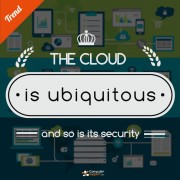Your Employees May Be Using Cloud Computing Without Your Permission
 Cloud solutions are growing in usage across the globe, but a recent survey suggests some of those uses may be slipping beneath businesses’ radar. The survey, hosted by 451 Research and published by Microsoft, looked at more than 2,000 executives and found a noticeable amount of shadow IT and off-budget cloud purchases.
Cloud solutions are growing in usage across the globe, but a recent survey suggests some of those uses may be slipping beneath businesses’ radar. The survey, hosted by 451 Research and published by Microsoft, looked at more than 2,000 executives and found a noticeable amount of shadow IT and off-budget cloud purchases.
Surprisingly, executives are aware of these implementations. The study found that 44 percent of executives are aware this is happening within their organizations. One-fifth of respondents reported a “significant” level of shadow IT spending related to cloud solutions.
Stealthy Clouds
Due to the ready availability of cloud solutions, it’s become easy for individuals to purchase and use a variety of services. No tech support is required to install this software, so tracking these installations has become a challenge for IT teams. One employee could install a piece of software on a work-issued or approved, server-connected personal device without anyone being immediately aware of it.
Cloud applications like Dropbox have increased employee temptation, since they can install the device without paying a fee. But even paid subscriptions are showing up in small departments, with employees skipping the step of going through the proper channels.
The Problem with Shadow IT
When employees go around IT and management, an organization begins to lose the ability to control its technology infrastructure. A well-designed server infrastructure is carefully planned to ensure all security standards are met. With these outside applications being installed on work devices, users could leave an organization open to security breaches or network instability.
IT support staff should regularly run reports on all software being used over the network. Approvals should be required for any new software, with IT shutting down any software that isn’t approved. Additionally, all users should be required to revisit an organization’s security agreements, which should include language clarifying that only approved software can be used on network-connected devices, including smartphones and tablets.



